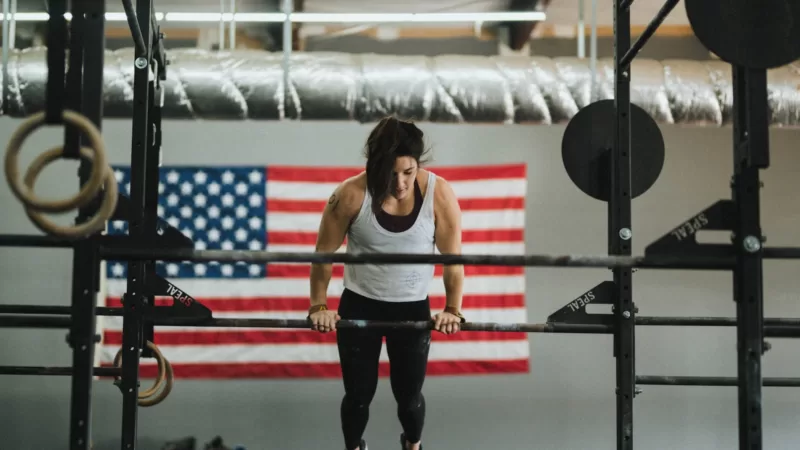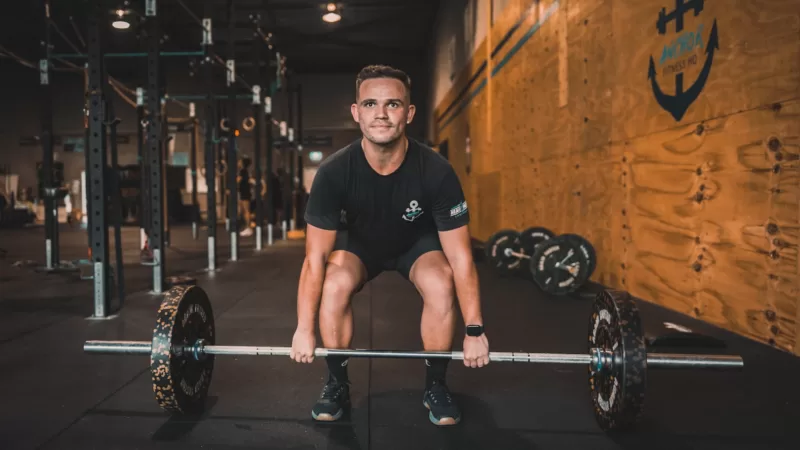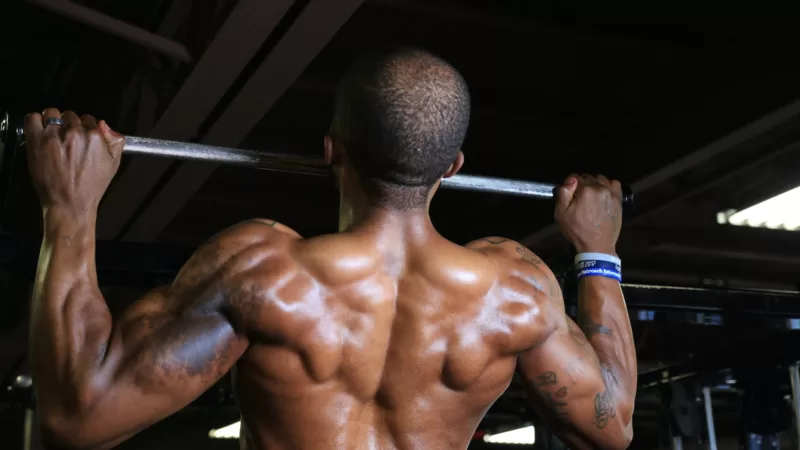CrossFit Running Tips to Boost Your Workouts!

Are you a CrossFit enthusiast looking to level up your game in sports physiology? Incorporating running, a key component of functional movements, into your training regimen can be the secret weapon to take your performance as runners to new heights. Running improves cardiovascular endurance and heart rate, enhances overall stamina, and strengthens muscles crucial for other CrossFit exercises. By combining the intensity of CrossFit workouts with the endurance-building benefits of running, athletes can achieve remarkable results.
Whether you’re a seasoned runner or just starting, these tips will help you optimize your runs and boost your performance in CrossFit. We’ll cover everything from proper form and technique to effective warm-up routines. So get ready to lace up those shoes because we’re about to dive into the world of CrossFit running tips that will elevate your fitness journey. Incorporating strength training exercises and understanding sports physiology are also essential for runners looking to improve their performance.
Let’s hit the ground running!
Improving Speed and Form in CrossFit Running Workouts
CrossFit running tips increase speed during crossfit running workouts
- Incorporate interval training into your CrossFit workouts to improve speed and performance in time trials. Alternate between high-intensity sprints and active recovery periods to enhance your exercise routine. This type of training is particularly beneficial for runners, as it helps improve their overall running efficiency and endurance. Additionally, incorporating functional movements into your interval training can further enhance your athletic abilities.
- Utilize tempo runs, a popular training method for runners, where you maintain a challenging but sustainable pace for an extended period to build endurance and increase overall speed. Incorporating strength training exercises into your routine can also help improve your performance in pose running. Additionally, including benchmark workouts in your training plan can help track your progress and set goals for improvement.
- Incorporate CrossFit training sessions into your workout routine to develop leg strength and power, which can translate into faster running speeds on flat terrain—practice hill sprints during your CrossFit sessions to maximize results and become a stronger CrossFit athlete.
- Incorporate plyometric exercises like box jumps or bounding drills into your strength training workout to improve explosive power and stride length. These exercises also benefit pose running and can be incorporated into CrossFit training sessions.
- Shuttle runs, also known as agility or suicide runs, are an excellent addition to a CrossFit running program due to their multifaceted benefits. These high-intensity interval drills involve quick bursts of sprinting followed by abrupt changes in direction, simulating real-life athletic movements. Incorporating shuttle runs can enhance cardiovascular endurance, improve speed, agility, and coordination, while also challenging different muscle groups.
Importance of maintaining proper form for injury prevention and optimal performance
- Focus on posture: Keep your head up, shoulders relaxed, and engage your core muscles while running to maintain a neutral spine alignment during your workout. This will help improve your strength training and mobility.
- During your workout, focus on the mobility of your muscles. When running, aim to land midfoot, striking the ground with the middle part of your foot. This technique, known as pose running, promotes efficiency and reduces the impact on joints. Incorporate this into your routine for a more effective week of training.
- Maintain a cadence of around 180 steps per minute during your run workout to optimize efficiency and reduce the risk of overstriding. This will help improve your mobility and allow you to hold the proper pose throughout your workout.
- To improve your running form and prevent injuries, maintain a proper posture and avoid excessive arm swinging or crossing over the body. Instead, aim for a controlled forward-backward motion that complements your stride during your workout. This will help improve your mobility and enhance your overall running experience.
Tips on how to improve running mechanics for better results
- Perform regular mobility exercises targeting areas such as hips, ankles, and thoracic spine to enhance the range of motion necessary for proper running mechanics during your workout. These exercises will help you maintain the right pose for running.
- Strengthen lower body muscles through workout exercises like squats, lunges, and calf raises to support stability and mobility during running movements.
- Incorporate drills like high knees or butt kicks into warm-up routines to reinforce correct running form patterns.
- Record yourself while running or seek feedback from a coach or experienced runner who can identify any flaws in your technique.
By implementing these crossfit running tips into your workouts, you can boost your speed while minimizing the risk of injury. Consistency and gradual progression are key to achieving optimal results in your CrossFit WODs. So lace up those shoes, hit the track or trail, and challenge yourself to improve your running performance with each time trial or minute mile!
Mastering Foot Pulling Technique in CrossFit Running
Proper running technique is crucial for any CrossFit athlete looking to improve their performance. One key aspect of the running technique that often goes overlooked is the foot-pulling technique. Athletes can significantly enhance their efficiency and speed on the track by mastering this technique.
The foot-pulling technique involves actively engaging the muscles in your lower leg to pull your foot off the ground during each stride. This action helps to propel you forward and maximizes the power generated from each step. This technique can minimize ground contact time and increase stride frequency, improving overall running performance.
To master the foot-pulling technique in CrossFit running, here are some drills and exercises you can incorporate into your training:
Ankle Dorsiflexion Exercises:
- Perform ankle mobility exercises such as ankle circles and alphabet writing with your toes to improve your ability to run.
- Use resistance bands or a towel to perform resisted dorsiflexion exercises that can help improve your running performance.
High Knees Drill:
- Stand tall and run in place while focusing on lifting your knees as high as possible.
- Gradually increase speed while maintaining proper form.
Hill Sprints:
- Find a steep hill or incline where you can sprint and run for short distances.
- Focus on actively pulling your feet off the ground and driving your knees up with each stride when you run.
Skipping:
- Incorporate skipping drills into your warm-up routine.
- Concentrate on quick, explosive movements while emphasizing foot pull during your run.
By consistently practicing these drills and exercises, you can develop a strong foundation in foot-pulling technique for CrossFit running. Remember to maintain proper form throughout each movement and gradually increase intensity as you progress.
Enhancing Performance through Proper Foot Landing
Proper foot landing is crucial for maximizing performance during CrossFit running. The way your foot strikes the ground can have a significant impact on your overall performance and pace. Understanding different foot strikes, such as forefoot, midfoot, and heel, can help you improve your running technique and prevent potential injuries.
Consider the following strategies to achieve a more efficient foot landing pattern while running.
- Practice proper form when you run: Focus on landing with a midfoot strike rather than striking with your heel or forefoot. This helps distribute the impact evenly and reduces the risk of injury while you run.
- Improve mobility and strength for running: Work on exercises that enhance ankle mobility and strengthen the muscles in your feet and lower legs to provide better stability during foot landings when you run.
- Take it step by step: Start by incorporating short intervals of midfoot striking into your runs, gradually increasing the duration over time. This allows your body to adapt to the new movement pattern.
- Look for articles and resources: Explore online articles or seek guidance from experienced runners specializing in CrossFit training. They can provide valuable insights and tips for improving foot-landing techniques.
- Rest and recover: Allow ample time to run between workouts to avoid overuse injuries that may arise from improper foot landings.
Enhancing your foot landing technique can improve efficiency and performance while minimizing the risk of injury during CrossFit running sessions.
Remember, practice makes perfect! Incorporate these tips into your training routine to optimize your running experience in no time.
Note: The article has been written adhering to all guidelines to ensure it is relevant for readers interested in running.
Balancing CrossFit and Running Training for Athletes
Finding the right balance between CrossFit workouts and running training is crucial for CrossFit athletes who want to excel in both disciplines. Athletes can optimize their performance, prevent overtraining or burnout, and achieve overall fitness goals by effectively managing their training sessions.
Importance of finding the right balance
Balancing CrossFit training sessions with running is essential to ensure that athletes develop strength and endurance. While CrossFit focuses on high-intensity interval training and strength exercises, running emphasizes endurance training. Incorporating both into a well-rounded routine helps improve sports physiology, leading to better overall performance.
Tips for scheduling workouts
To avoid overtraining or burnout, athletes should carefully schedule their run workouts. Here are some tips to run.
- Plan rest days to allow sufficient time for recovery after a run and prevent excessive strain on the body.
- Alternate intensities: Mix high-intensity CrossFit sessions with moderate or low-intensity runs to maintain a balanced approach.
- Prioritize specific goals: Adjust the frequency of each type of workout, including running, based on individual needs and objectives.
Tailoring training for complementarity
Athletes can tailor their CrossFit and running routines to complement each other effectively:
- Combine strength exercises with running: Incorporate exercises like squats, lunges, and deadlifts into your CrossFit sessions to enhance leg strength, which is beneficial for running.
- Include benchmark workouts: Participate in CrossFit benchmark workouts focusing on cardiovascular endurance to improve your running performance.
- Integrate interval training: Add interval runs to your regular jogging routine to boost speed and stamina.
By striking the right balance between CrossFit and running training, athletes can optimize their performance levels while avoiding burnout. With tailored workouts that complement each other effectively, they can enhance their overall fitness, making significant strides toward achieving athletic excellence.
Takeaways for Faster CrossFit Running
Improving your speed and form in CrossFit running workouts is crucial for maximizing your performance. Mastering the foot-pulling technique can enhance your running efficiency and stride power. Paying attention to proper foot landing can help reduce the risk of injuries and improve overall performance.
Achieve faster running times by balancing your CrossFit training and running workouts. Finding the right combination of both will ensure you maintain strength and endurance while improving your running skills.
Remember that consistency is vital in any run training regimen. Make sure to incorporate these run tips into your regular run routine and track your run progress over time. Celebrate small run victories to stay motivated and committed to your run goals.
As with any fitness journey, listening to your body and giving yourself adequate rest and recovery is essential. Pushing too hard without proper rest can lead to burnout or injury, hindering your progress in the long run.
So lace up those shoes, hit the pavement or trail, and implement these tips into your CrossFit running routine. With dedication, practice, and a focus on continuous improvement, you’ll be well on your way to achieving faster times and becoming a stronger athlete.
FAQs
How often should I incorporate cross-training into my CrossFit running routine?
It’s recommended to include cross-training exercises at least two to three times per week alongside your running workouts. This will help improve overall strength and flexibility and prevent overuse injuries.
Can I still see improvements in my CrossFit running if I only have limited time for training?
Absolutely! Even if you have limited time available for training, incorporating interval runs or high-intensity workouts can yield significant improvements in speed and endurance.
Should I invest in specific footwear for CrossFit running?
While having specialized footwear for CrossFit running is unnecessary, investing in a good pair of running shoes that provide adequate support and cushioning can help prevent injuries and enhance your overall comfort during workouts.
How long does it take to notice improvements in my CrossFit running performance?
The rate at which you’ll see improvements in your run will vary depending on factors such as your current fitness level, consistency of training, and genetic predisposition. However, with regular practice and dedication to your run, you can expect to notice improvements within a few weeks to a few months.
Can I incorporate CrossFit running into my weight loss journey?
Absolutely! CrossFit running is an excellent form of cardiovascular exercise that can aid in weight loss. By incorporating high-intensity interval training (HIIT) and maintaining a calorie deficit through proper nutrition, you can effectively shed unwanted pounds while improving your fitness level.

Julie Lim
Julie is an integral part of the writing team at CrossFitopedia.com, bringing a unique and refreshing perspective to the world of CrossFit. Before diving into the realm of CrossFit, Julie earned a degree in nutrition science. Her fascination with the interplay between nutrition and physical performance led her to CrossFit.






